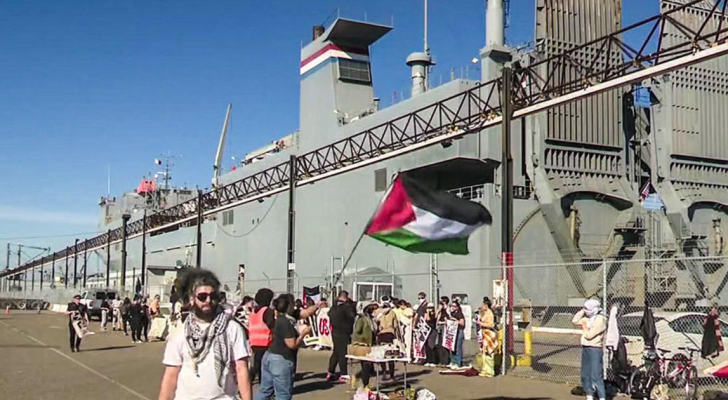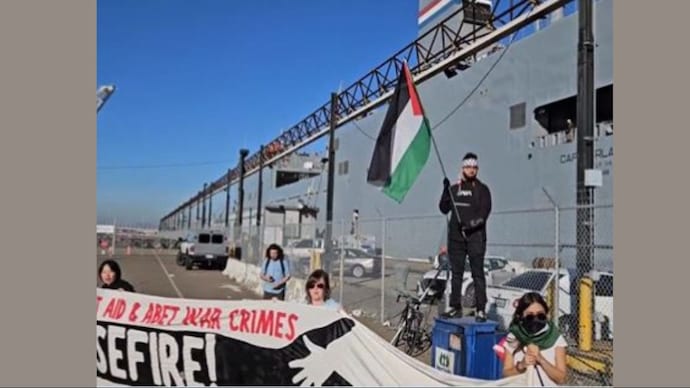Palestinians inspect the destruction around Ahmed Yassin mosque, which was levelled by Israeli airstrikes, in Gaza, October 9, 2023. /CFP
By: Dr. James M. Dorsey
Date:
November 4, 2023
Israel’s options are central to discussions about the day after the guns fall silent in Gaza. Absent from the debate is what Palestinians want.
Also absent is any discussion of funding for Gaza’s reconstruction, although the assumption is that oil-rich Gulf states will step up to the plate.
The significance of Palestinians’ wants is magnified by the fact that Israel has no good options, particularly if it fails to or cannot destroy Hamas’ political and military infrastructure.
While none of the options hold out the prospect of Palestinian elections, some have been already been rejected by Palestinians and Arab states; others could be acceptable to Palestinians on an interim basis.
US Secretary of State Antony Blinken returned to Israel and the Middle East on Friday to discuss the objectives and conduct of Israel’s assault on Gaza, containing the Gaza war, the rescue of hostages held in Gaza by Hamas and other groups, and potential arrangements for the day after.
Palestinian acceptance of those arrangements is key to the stability and sustainability of any post-war structure, even if it is temporary.
A 10-page concept paper dated October 13 and prepared by Israel’s intelligence ministry listed three options under discussion.
Despite its labelling, the ministry is not a decision-making body, even if the options are in line with statements by senior Israeli officials and various segments of the Israeli public, and one was reportedly adopted in Israeli lobbying efforts.
Moreover, the ministry does not control Israel’s intelligence services that report to Prime Minister Binyamin Netanyahu or the military command.
The concept’s three problematic options include:The creation of a homegrown Palestinian administration in Gaza that has no links with Hamas and/or other Palestinian militants.
No Palestinian is likely to offer himself forward as willing to take over on the back of Israeli tanks, even though Abu Dhabi-based Mohammed Dahlan, a controversial former Palestinian Gaza security chief with close ties to the United Arab Emirates, Egypt, and Israel, appeared to leave the door open to his possible return to the Strip.
Without taking Mr. Dahlan’s potential ambitions into account, the paper described the option of a homegrown administration as the “most dangerous alternative” because it could “lead to the establishment of a Palestinian state,” or new, more militant groups.The return to Gaza of Palestinian President Mahmoud Abbas’ West Bank-based Palestine Authority. Dominated by Al Fatah, Hamas’ archrival, the Authority was expelled from Gaza in 2007 by Hamas, a year after the group won Palestinians’ last election.
Like the first option, the paper counselled against a return of the Authority, which is deeply unpopular on the West Bank, because it would constitute “an unprecedented victory of the Palestinian national movement, a victory that will claim the lives of thousands of Israeli civilians and soldiers and does not safeguard Israel’s security.”
In addition, the Authority would likely reject taking charge of Gaza unless its mandate was linked to a definitive resolution of the Israeli-Palestinian conflict.
An Israeli foreign ministry’s options paper suggested that doubts about the Authority and the Authority’s concerns could be addressed by a multinational force and a US-led contact group that would help the Authority govern the Strip.
Surprisingly, to make this work, the paper, drafted by the ministry’s policy planning department, appears to suggest a dramatic revision of Israeli policy.
Less surprisingly, Israeli Foreign Minister Eli Cohen ignored the paper that argues the government would have to drop its efforts to separate Gaza from the West Bank and embrace a two-state solution, involving the establishment of an independent Palestinian state alongside Israel.
In an interview with The New Yorker, political scientist Ghassan Khatib, a former Palestinian Authority official, said that “Hamas is getting more popular in the West Bank because it is perceived to be standing up to the oppressive Israeli occupation, and because of the brutal retaliation by Israel.”
Mr. Khatib said many Palestinians see Hamas’ October 7 attack against Israel in which some 1,400, mostly civilian, Israelis were brutally killed, and more than 300 others kidnapped as retribution for decades of “piecemeal repression,” including the expansion of Israeli settlements in the West Bank and increased settler violence against Palestinians.
A poll conducted by the Palestine Center for Policy and Survey Research in Gaza and the West Bank in September suggested that exiled Hamas leader Ismail Haniyeh would rout by a large margin Mr. Abbas and Marwan Barghouti, a popular imprisoned Al-Fatah leader convicted in Israel on murder charges, in an election.
Yet, when asked who Gazans would want to see as the candidate to succeed Mr. Abbas, Mr. Haniyeh and Mr. Barghouti were neck-to-neck at 24 versus 23 per cent.
Mr. Barghouti is widely seen as a potential successor to 87-year old Mr. Abbas if Israel releases him.
Even so, 37 per cent described Hamas as the “most deserving” representative of the Palestinians compared to 26 per cent who attributed that accolade to Al-Fatah.
Gazan attitudes towards a resolution of the Israeli-Palestinian conflict appeared uncompromising with 75 per cent rejecting a one-state solution in which Israeli Jews and Palestinians enjoy equal rights and 65 per cent opposing a two-state solution.
Moreover, 51 per cent of Gazans and 54 per cent of West Bankers favoured armed struggle rather than peaceful protest or negotiations to break the deadlock in the Israeli-Palestinian conflict. Sixty-seven per cent supported attacks on Israeli civilians in Israel.
While Israelis hardliners will see the poll as confirmation of their assertion that Gaza equals Hamas and justification of the indiscriminate bombing of the Strip, more moderate voices caution that Israeli policy has created a stark choice.
“Very soon Israelis will have to decide: either a violent settler state which will drain lives and finance, or a functioning society with clear borders. On Oct 7 we saw the result of the former,” tweeted journalist Etan Nechin.The intelligence ministry’s favoured and most controversial option involves the permanent transfer of Gaza’s 2.3 million inhabitants to Egypt’s Sinai Peninsula, which has been denounced by Palestinians and rejected by Egypt as a third ethnic cleansing reminiscent of the 1948 and 1967 expulsions and displacements of hundreds of thousands of Palestinians.
Despite Mr. Netanyahu’s insistence that the intelligence ministry’s proposal Egypt absorbing Gazan Palestinians in exchange for the cancellation of the country’s US$165 billion foreign debt in discussions on the sidelines of last month’s European summit. Germany, France, and Britain rejected the proposition.
Other proposals emerging in the debate about the day after the Gazan war include:Depopulating northern Gaza by pushing all the Strip’s residents into the southern half of the territory so that Israel can create an uninhabited buffer zone.
Leaving aside legal and moral implications, the problem with this proposition is that it would aggravate conditions for Palestinians already living in one of the world’s most densely populated territories in an even tighter space that would retain a border with Israel. As a result, it would likely perpetuate rather than reduce Israeli perceptions of the Gaza security threat.Handing Gaza over to an Arab peacekeeping force.
While Arab states may be tempted to return Gaza to Arab control, like the Palestine Authority, they are unlikely to want to shoulder responsibility on the back of Israeli tanks without solid indications that the force’s presence would be linked to a resolution of the Israeli-Palestinian conflict.
In addition, many Palestinians feel abandoned as much by Arab states as they do by the rest of the international community.
Moreover, Arab condemnations of the Israeli assault on Gaza notwithstanding, Arab states appear in no rush to be seen as forcefully striving to end the carnage. The Arab League, which groups the world’s 22 Arab states, has scheduled a meeting to discuss the Gaza crisis for November 11 rather than immediately.
Arab states appear to either hope Israel will bow to international pressure by then, even though there is no indication that is likely, or privately want to see Israel successfully eradicate Hamas.
Countries like Saudi Arabia and the United Arab Emirates have cracked down on Hamas in the past. They see Hamas’ survival as potentially emboldening other militants such as the Houthis in Yemen and Hezbollah in Lebanon, as well as legitimising Iranian support for non-state allies.
At the bottom line, a return to Gaza of the Palestine Authority buffeted by a multi-national force that includes an Arab contingent, may be the most logical post-war scenario.
Expecting that Mr. Netanyahu’s days may be numbered with many Israelis blaming the prime minister for the Israeli intelligence and military fiasco that enabled the October 7 Hamas attack, many hope that his political demise would open the door to a temporary transfer of control of Gaza linked to a concerted effort to end the conflict.
That may be a tall order with emotions on both sides of the divide making discussion of peace and a buy-in from Palestinians and Israelis unlikely any time soon, if not impossible. It’s an even taller order given doubts that a two-state solution is still viable, leaving a one-state approach as the only option.
Dr. James M. Dorsey is a senior fellow at the S. Rajaratnam School of International Studies, co-director of the University of Würzburg’s Institute for Fan Culture, and the author of The Turbulent World of Middle East Soccer blog, a book with the same title, Comparative Political Transitions between Southeast Asia and the Middle East and North Africa, co-authored with Dr. Teresita Cruz-Del Rosario and three forthcoming books, Shifting Sands, Essays on Sports and Politics in the Middle East and North Africaas well as Creating Frankenstein: The Saudi Export of Ultra-conservatism and China and the Middle East: Venturing into the Maelstrom.
4 November 2023
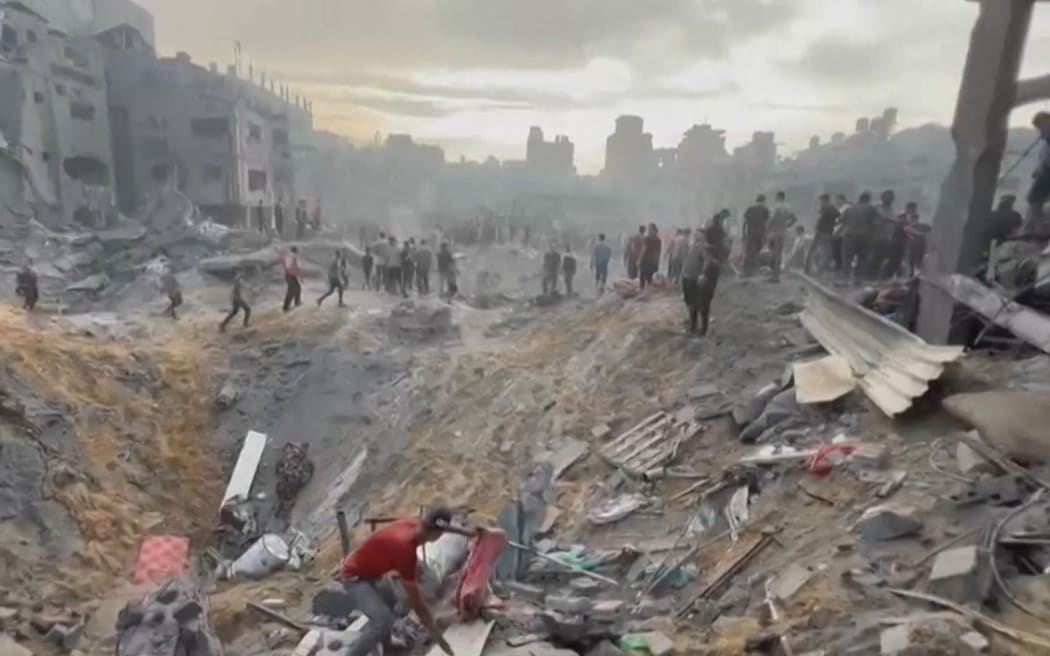
Analysis - Hamas has prepared for a long, drawn-out war in the Gaza Strip and believes it can hold up Israel's advance long enough to force its arch-enemy to agree to a ceasefire, two sources close to the organisation's leadership said.
Hamas, which rules Gaza, has stockpiled weapons, missiles, food and medical supplies, according to the people, who declined to be named due to the sensitivity of the situation. The group is confident its thousands of fighters can survive for months in a city of tunnels carved deep beneath the Palestinian enclave and frustrate Israeli forces with urban guerrilla tactics, the people told Reuters.
Ultimately, Hamas believes international pressure for Israel to end the siege, as civilian casualties mount, could force a ceasefire and a negotiated settlement that would see the militant group emerge with a tangible concession such as the release of thousands of Palestinian prisoners in exchange for Israeli hostages, the sources said.
The group has made it clear to the US and Israel at indirect, Qatar-mediated hostage negotiations that it wants to force such a prisoner release in exchange for hostages, according to four Hamas officials, a regional official and a person familiar with the White House's thinking.
Longer term, Hamas has said it wants to end Israel's 17-year blockade of Gaza, as well as to halt Israeli settlement expansion and what Palestinians see as heavy-handed actions by Israeli security forces at the al-Aqsa mosque, the most sacred Muslim shrine in Jerusalem.
On Thursday, UN experts called for a humanitarian ceasefire in Gaza, saying Palestinians there were at "grave risk of genocide". Many experts see a spiralling crisis, with no clear endgame in sight for either side.
"The mission to destroy Hamas is not easily achieved," said Marwan Al-Muasher, Jordan's former foreign minister and deputy prime minister who now works for the Carnegie Endowment for International Peace in Washington.
"There is no military solution to this conflict. We are in some dark times. This war is not going to be short."
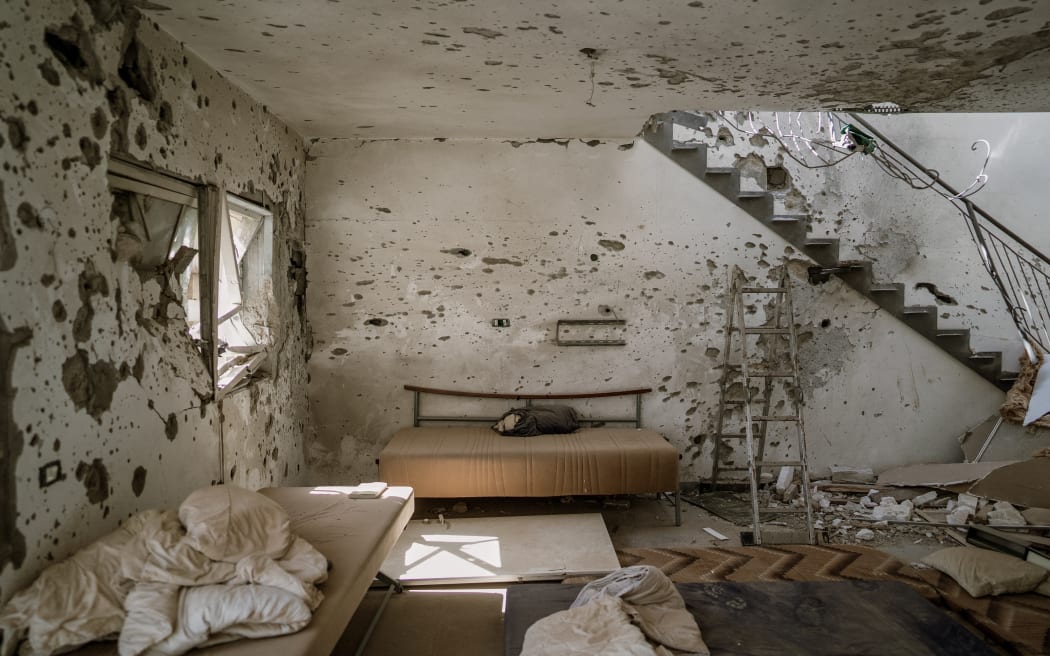
The destruction caused by Hamas militants when they infiltrated Kibbutz Be'eri, near the Israeli-Gaza border, in southern Israel. Photo: Dima Vazinovich / Middle East Images via AFP
Israel has deployed overwhelming aerial firepower since the 7 October attack, which saw Hamas gunmen burst out of the Gaza Strip, killing 1400 Israelis and taking 239 hostages.
The Gazan death toll has surpassed 9000, with every day of violence fuelling protests around the world over the plight of more than 2 million Gazans trapped in the tiny enclave, many without water, food or power. Israeli airstrikes hit a crowded refugee camp in the Gaza on Tuesday, killing at least 50 Palestinians and a Hamas commander.
Israeli Prime Minister Benjamin Netanyahu vows to wipe out Hamas and has rejected calls for a ceasefire. Israeli officials say they are under no illusions about what may lie ahead and accuse the militants of hiding behind civilians.
The country has braced itself for a "long and painful war", said Danny Danon, a former Israeli ambassador to the UN and ex-member of the Knesset foreign affairs and defence committee.
"We know at the end that we will prevail and that we will defeat Hamas," he told Reuters. "The question will be the price, and we have to be very cautious and very careful and understand that it's a very complex urban area to manoeuvre."
The United States has said now is not the time for a general ceasefire, though says pauses in hostilities are needed to deliver humanitarian aid.
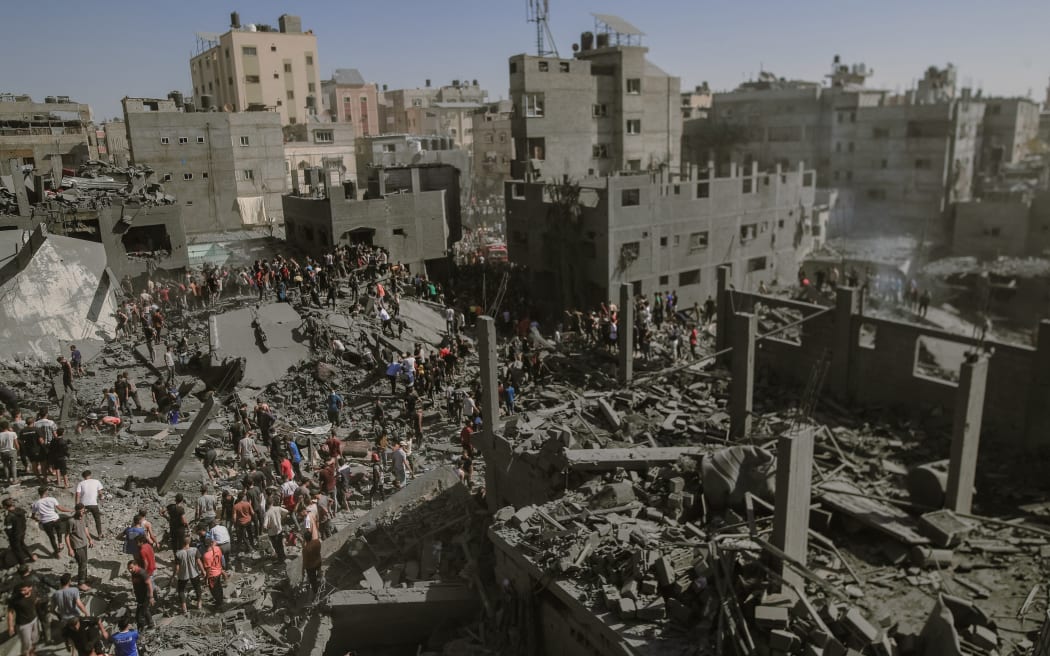
After an Israeli airstrike on 26 October in the city of Khan Yunis, the landscape was one of devastation.
Hamas 'fully prepared'
Adeeb Ziadeh, a Palestinian expert in international affairs at Qatar University who has studied Hamas, said the group must have had a longer-term plan to follow its assault on Israel.
"Those who carried out the 7 October attack with its level of proficiency, this level of expertise, precision and intensity, would have prepared for a long-term battle. It's not possible for Hamas to engage in such an attack without being fully prepared and mobilised for the outcome," Ziadeh told Reuters.
Washington expects Hamas to try to bog Israeli forces down in street-by-street combat in Gaza and inflict heavy enough military casualties to also reduce Israeli public support for a drawn-out conflict, said the source familiar with the White House's thinking, who asked to remain anonymous to speak freely.
Israeli officials have nonetheless stressed to their American counterparts that they're prepared to confront Hamas' guerrilla tactics as well as withstand international criticism of their offensive, according to the person. Whether the country has the capability to eliminate Hamas or merely severely degrade the organisation remains an open question, the source added.
Hamas has about 40,000 fighters, according to the sources at the group. They can move around the enclave using a vast web of fortified tunnels, hundreds of kilometres long and up to 80 metres deep, built over many years.
On Thursday, militants in Gaza were seen emerging from tunnels to fire at tanks, then disappearing back into the network, according to residents and videos.
The Israeli military says soldiers from its Yahalom special combat engineering unit have been working with other forces to locate and destroy tunnel shafts, during what a spokesman called a "complex urban fight" in Gaza.
Hamas has fought a series of wars with Israel in recent decades and Ali Baraka, the Beirut-based head of Hamas' External Relations, said it had gradually improved its military capabilities, particularly its missiles. In the 2008 Gaza war, Hamas rockets had a maximum range of 40km, but that had risen to 230km by the 2021 conflict, he added.
"In every war, we surprise the Israelis with something new," Baraka told Reuters.
An official close to the Iranian-backed Lebanese movement Hezbollah, which is allied to Hamas, said the Palestinian militant group's fighting strength remained mostly intact after weeks of bombardment. Hezbollah has a joint military operation room in Lebanon with Hamas and other allied factions in a regional network backed by Iran, according to Hezbollah and Hamas officials.
Hamas, which is designated a terrorist movement by Israel, the US and the EU, called for the destruction of Israel in its 1988 founding charter.
In a subsequent document known as its 2017 charter, the group accepted for the first time the idea of a Palestinian state within the 1967 borders claimed by Israel after the Six Day War, although the group did not explicitly recognise Israel's right to exist.
Hamas official Osama Hamdan, who is based in Beirut, said the 7 October attack and the unfolding Gaza war would put the issue of Palestinian statehood back on the map.
"It is an opportunity for us to tell them that we can make our destiny with our own hands. We can arrange the equation of the region in a way that serves our interests," he told Reuters.
Hamas gained leverage after the Oslo peace accord, agreed between Israel and the Palestinian Authority (PA) in 1993 to end decades of conflict, hit a wall. Netanyahu won power for the first time in 1996. Palestinians and the US negotiators said his government's refusal over the years to halt Jewish settlement building in the occupied West Bank undermined efforts to create a separate Palestinian state. Israeli officials in the past have denied settlements were an obstacle to peace and Netanyahu's current far-right coalition has taken an even harder line against ceding occupied land.
An Arab peace initiative, with broad international and unanimous Arab support, has been on the table since 2002. The plan offers Israel peace treaties with full diplomatic ties in exchange for a sovereign Palestinian state.
Netanyahu has instead opted for seeking an Arab Sunni alliance with Israel, made up of Egypt and Jordan - nations Israel has peace treaties with dating from 1979 and 1994 - as well as the United Arab Emirates, Bahrain, and Morocco. Before the 7 October Hamas attack, he was in US-brokered talks with Saudi Arabia to forge a landmark diplomatic deal as a united front against Iran, but that process has since been put on hold.
Muasher, the former Jordanian minister at Carnegie, said Hamas' attack had ended any possibility that Middle Eastern stability could be reached without engaging with Palestinians.
"It's clear today that without peace with the Palestinians you are not going to have peace in the region."
- Reuters






